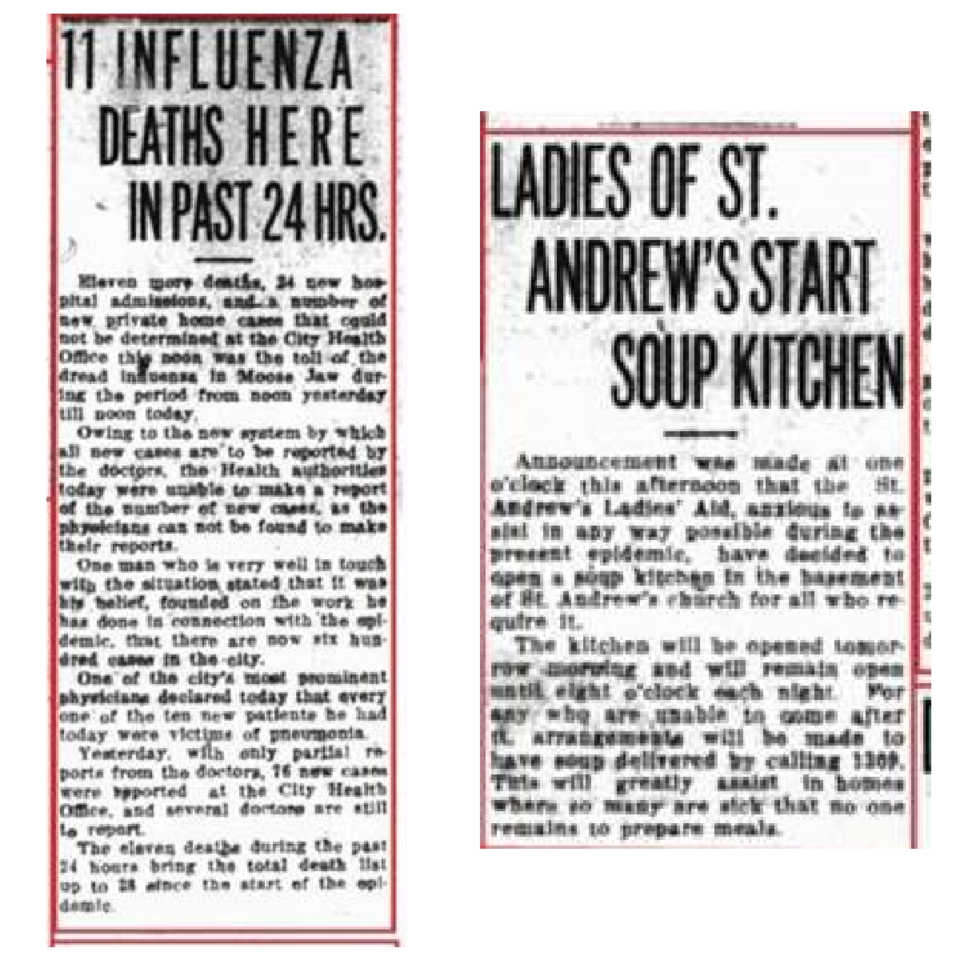The Spanish Flu Pandemic of 1918-1920 was an Avian Flu (H1N1 influenza A virus), therefore different than COVID-19 – but they both have similar modes of transmission; both a result of zoonosis and both massively disruptive to daily life.
The 1918 harvest almost ceased because threshing crews were sick or dead. Schools were closed. Businesses were closed or couldn’t find healthy workers. Sick farm families couldn’t do chores.
Prohibition of liquor began in 1915. Alcohol was only available by prescription but was abundantly prescribed, for all. Champ writes, “Before tending to influenza patients, the doctor at Rouleau took a swig of brandy for medicinal purposes.”
In 1918-20 viruses were unknown. The study of viruses, Virology, only emerged after the invention of the electron microscope in 1931. With it researchers could see viruses.
We know COVID-19 has variants and sub-variants. One assumes Spanish Flu had variants. Joan Champ writes, Spanish Flu “… reached Saskatchewan on October 1, 1918…” and “… spread rapidly throughout the province…”. Joan goes on to write, “… with deaths peaking in mid-November, 1918…” and then deaths steadily declined. A Variant arrived? Maybe?
Spanish Flu began with ‘flu’ symptoms; fever, aches – headache. Joan Champ writes, coughing resulted in, “quantities of blood-stained expectoration or nearly pure dark blood ...the face and fingers cyanosed, active delirium came on ... the tongue dry and brown, the whole surface of the body blue, the temperature rapidly fell and the patient died from failure of the respiratory system.”
There were no Vaccines or Antibiotics in 1918. People died of pneumonia after 10 days of illness. Almost 60% of those who died in Saskatchewan were ages 20 to 40. The result was many orphans and/or single parent families. It is assumed ‘older people' who survived the Russian Flu Pandemic* of 1889-90 had ‘antibody resistance.
In 1918-19 the population of Saskatchewan was about 725,000 and 5,018 people died from the Flu, < 7%. Small villages were hardest hit by deaths.
By January 2022, 1001 Saskatchewan people died of ‘COVID’, > 1%, (same as for Canada).
*Coronavirus as suggested origin of Russian Flu Pandemic is being debated.




